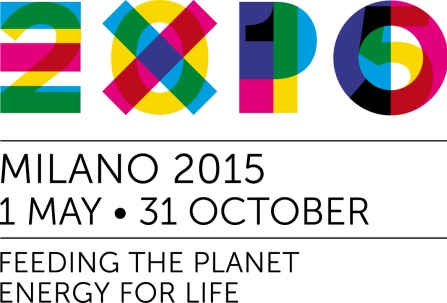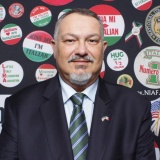
WTI Magazine #53 2015 February, 6
Author : Expo 2015 Translation by:
Expo 2015 is the Universal Exposition to be held in Milan from May 1 to October 31 next year. The theme of the event will be "Feeding the Planet, Energy for Life". Over 140 countries will participate, of which 53 will build their own pavilion with a total investment of around one billion Euro; several International Organizations have confirmed their participation. 20 million visitors are expected.
Italian tourism will benefit from a turnover of approximately 5 billion Euro and it is estimated that the direct and indirect effects on employment will involve a team of approximately 60,000 people. However, it is not so much the figures that make Expo Milano 2015 particular.
For the first time in its centuries-old history, the Expo will not simply be an exhibition of human progress, but the opportunity to promote discussion and cooperation between nations, organizations and businesses to develop joint strategies to improve the quality of life and support the environment. This will be achieved by an edition that will be able to offer the general public an unforgettable experience that will combine knowledge, taste and entertainment, with a focus on families, children, young people and women. The Expo Site will be open from 10 am to 11 pm every day of the week to ensure visitors can experience all the cultural and dining offerings presented by all Participants and several partners (including Eataly) also in the evening. Moreover, they will be able to participate in various events.
The key players of this event will be the Participating Countries presenting their experiences and solutions in the field of nutrition. In fact, the Universal Exposition has always represented an opportunity to show the best of the various Countries to an audience of millions of people from all over the world.
Several products and technologies have made their début at this event: from the combine harvester of the London edition in 1851, to the lift in 1853, to the early sewing machines of the Parisian edition in 1855; from the telephone in 1876 in Philadelphia, to external lighting systems based on Edison's light bulb, to the first assembly line for automobiles in 1915, to the television in 1939 and so on. Today, the emphasis has shifted from themes that are more "hardware" oriented, to issues that require more complex and multidisciplinary approaches. However, the overarching aim to present the best at the Expo remains.
The site chosen for Expo Milano 2015 is situated in the metropolitan area of Milan, north-west of the city. The area, half an hour from the Piazza del Duomo, is at the centre of all Milanese transport systems: it is at the junction of the highways of the North. It is directly linked by a metro line and a train station and is no more than twenty minutes from Malpensa Airport.
The exhibition area is more than one million square meters and is spread over two orthogonal axes, called Cardo and Decumanus. The site is completely surrounded by a canal and large canopies placed on the routes, helping visitors shelter from the rain and sun. The four cardinal points will be identified by key iconic elements of Expo Milano 2015: the Mediterranean hill, the Open Air Theatre, the Lake Arena and the Expo Centre and other landmarks that guide visitors and host major expo events.
The Italian pavilion will be located along the Cardo (on an axis of about 400 meters): it will be divided into exhibition spaces dedicated to excellence in regional food culminating with Palazzo Italia, a place of representation for institutional and governmental meetings, and entertainment and show areas.
The Cardo will also host two other major pavilions: Italian wine production, sponsored by the Ministry of Agriculture, and the European Union, for the first time present at a Universal Exposition with a self-managed area.
Instead, the Decumanus (about 1.5 km long) will be facing the exhibition spaces of the Countries. Each Pavilion will no longer be a place-container of objects, products and goods. It will be a place for exhibitions and events related to the theme of Expo Milano 2015, designed according to the principles set out in the Theme Guide provided in October 2012.
The Clusters are a great innovation introduced by Expo Milano 2015. They are shared exhibition areas dedicated to Countries that do not wish to have their own pavilion, for various reasons. These "villages", which will be located throughout the site, will allow these Countries to represent the food history, culture and tradition which characterize them most. In fact, some Clusters will be dedicated to the presentation and tasting of timeless products, such as rice, coffee, spices, fruit and vegetables, cereals and tubers. However, others will group Countries around themes that characterize specific regions such as the Bio-Mediterranean, islands and arid areas.
Civil Society will find hospitality in Cascina Triulza, an old rural building within the exhibition site that is being renovated and that will provide for experiences, debates and discussions between the Non-Governmental and Third Sector Organizations that, for a number of reasons, deal with the theme of food.
Another point of interest of the visit are the Thematic Areas, built by the Expo 2015 company, which will be a sort of leitmotif of the event to simplify understanding of the boundaries within which the theme will be developed:
• the Zero Pavilion, managed by Davide Rampello with the architecture of Michele De Lucchi, is the introductory space that will be a springboard to the themes and languages of the Expo;
• the Future Food District, managed by Carlo Ratti, in collaboration with MIT in Boston, will allow visitors to have an insight into the future of the food chain;
• the Children's Park, managed by Reggio Children, is an area for games and knowledge dedicated entirely to children and families;
• the Biodiversity Park, thanks to the collaboration of the University of Milan and Carlin Petrini's Slow Food, will reproduce the diversity of life in a varied and very impressive landscape, able to emotionally engage and intellectually inspire visitors.
The thematic areas finally include the "Arts&Foods" exhibition managed by Germano Celant, dedicated to the relationship between art and food, which will be set up at the Triennale in Milan.
The work plan is progressing according to schedule and completion is expected by April 2015. Up to October 2014, the situation is as follows:
• the first phase, referred to as interference removal is 94% complete;
• the second phase, work for the preparation of the platform is 80% complete;
• the third and final phase involves the construction and set-up of the Country Pavilions and the implementation of the Thematic and shared Areas by the organizer.
• At present, over 40 Countries have begun work at the site. In the coming weeks all Countries building an own Pavilion will be operational and ready to complete work by April 2015.
The Expo Milano 2015 challenge will also be addressed in terms of environmental sustainability - of the pavilions and the food chain - energy efficiency and water resources, as well as the fight against waste. One of the key objectives of the event that stands out is, in fact, the promotion and dissemination of good conduct that is best expressed through respect for the environment and natural ecosystems. There will be many initiatives to assure the achievement of these goals: from 200 thousand square meters or more of green areas at the exhibition site, to low-impact telecommunications and energy infrastructures, to the international standards adopted for the sustainable management of the event. The Universal Exposition of 2015 is the first Expo to have published a Sustainability Report: the document was presented at the end of 2013 and will be drafted annually to guarantee transparency, It includes monitoring and reporting of activities carried out and will be a legacy in the history of major events.
Expo Milano 2015 is the greatest collective work dedicated to the theme of nutrition ever created. This work will involve the contribution of several intellectuals, architects, scientists who are working towards its implementation in various capacities. These include Ermanno Olmi, the director of Albero degli Zoccoli (Tree of Clogs) working on a documentary film that narrates the importance of water as a symbol of life and energy for the world; Dante Ferretti, the production designer, and winner of three Oscar, who is managing the development of the Cardo and Decumanus; Norman Foster, the architect who designed the Pavilion of the UAE, and several Ambassadors such as as the chef, Davide Oldani; footballers Albertini, Kakà and Hernanes; the TV presenter Antonella Clerici; the architect, Massimiliano Fuksas and many others.
Event communications have been intense and the symbol of the event is Foody, the Mascot. It was created by Disney Italia and is made up of 11 characters (Pomina the apple, Piera the pear, Gury the watermelon, Max Mais the blue corn, Arabella the orange, Chicca the pomegranate, the Rap Brothers radishes, Rodolfo the fig, Josephine the banana, Manghy the mango and Guagliò the garlic), each with a curious tale to tell.
Because of its nature and the quality of the theme chosen, the ambition of Expo Milano 2015 goes beyond the simple promotion of the event. The intention is to create the conditions for actual involvement in the Exposition, and a reflection on its theme by the highest possible number of people around the world.
Thus, in addition to the constant activity carried out on the network and on social networks, a series of inclusion projects have been developed:
• Laboratorio Expo, a collaboration with Fondazione Feltrinelli aimed at involving major universities around the world, for sharing research and ideas, and for developing a list of recommendations to be discussed during the six months of the Expo.
• Women for Expo, the largest network of women dedicated to the theme of nutrition: it is a project developed with Fondazione Mondadori and the Ministry of Foreign Affairs.
• Children Share, in collaboration with MUBA, aims to allow children from all over the world to take part together, through games, food traditions, and activities focused on knowledge and responsibility, all stimulating awareness in terms of the issue of sustainability.
• Short Food Movie, a project of Fondazione Cinema per Roma Centro Sperimentale di Cinematografia (Rome Cinema Foundation and Experimental Centre of Cinematography), encourages young people around the world to film a video with a tablet or smartphone that narrates the themes of Expo Milano 2015.
In addition, as part of an initiative by the President of the Milan's Law Court, Livia Pomodoro, a project is being developed by Centro sul Diritto all'Alimentazione (Nutrition Rights Center) which aims to promote an International Agreement on The Right to Food.
Together, these initiatives will make up the legacy of Expo Milano 2015, which aims to be not only a material legacy, as it was for many editions of the Universal Exposition, but also one that is conceptual and useful, helping humanity to live consciously in a better world.



